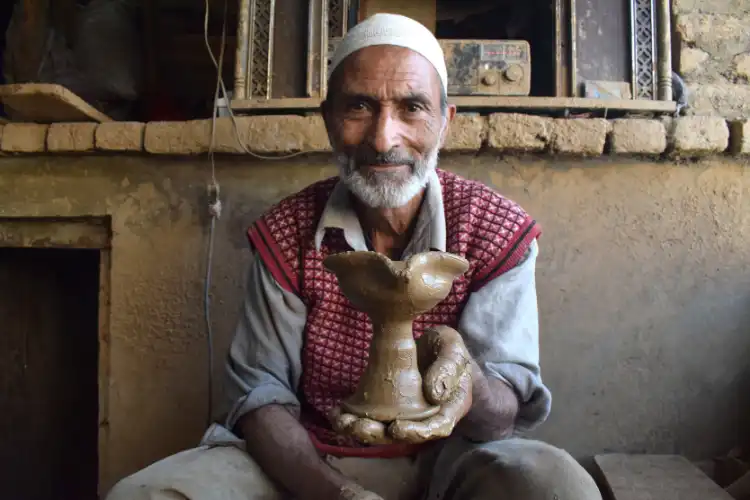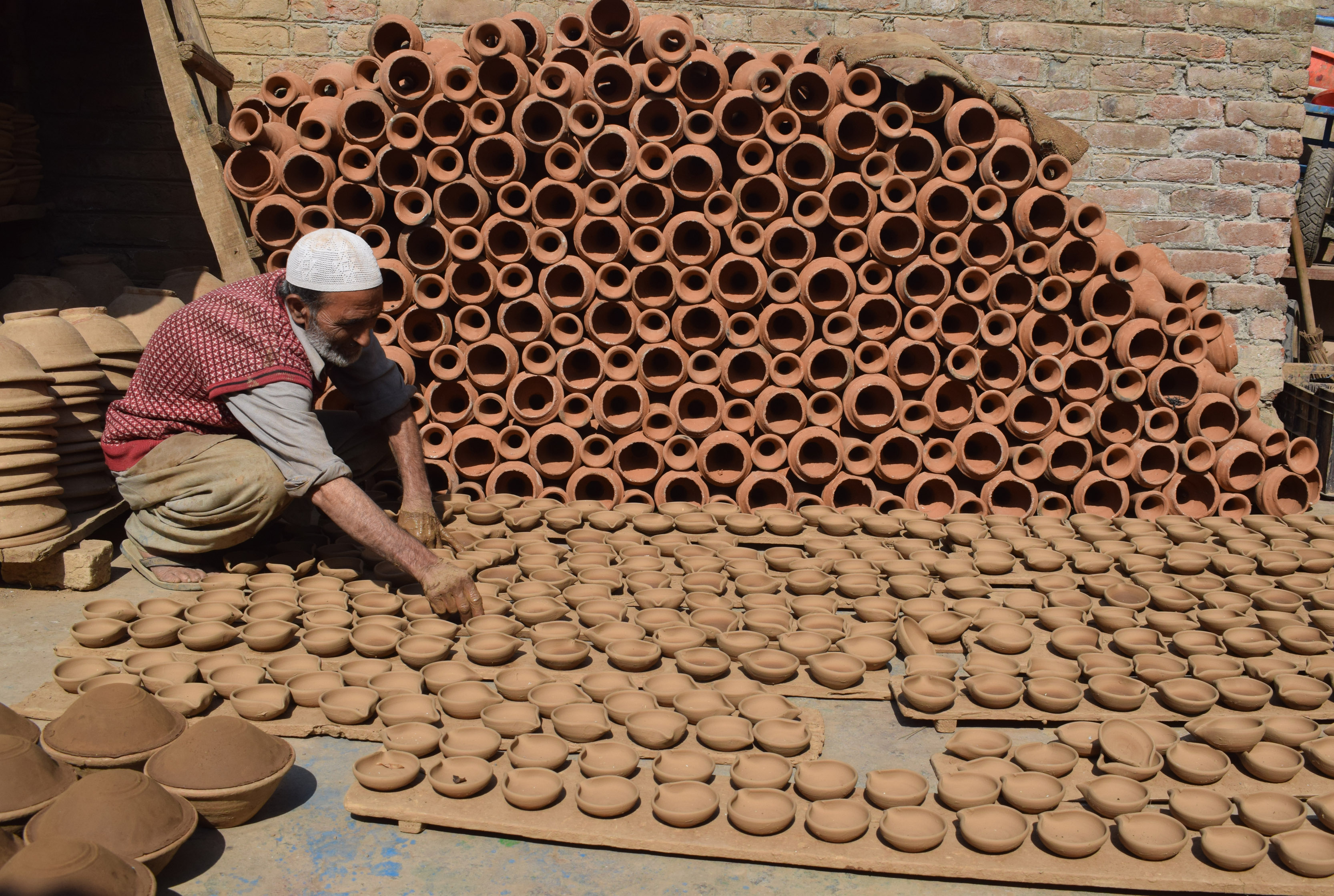
Ehsan Fazili/Srinagar
For the last two weeks, all members of the Kumhar family of Nishat, Srinagar, have been busy completing the orders of over 15000 Diyas, clay lamps for Diwali.
"We had an order for 20,000 Diyas for this Diwali”, said the young Umar Kumhar, whose efforts have revived the dying art of glazed pottery in Kashmir. He told Awaz-the Voice that his family employed workers to make 15,000 diyas, which are being supplied for distribution at different places across the valley.
Umar’s father, Abdul Salam Kumhar inherits the art of making clay pots and trading in it from his ancestors. “These diyas are supplied to a dealer, Ghulam Qadir Kadan in Kulgam district of South Kashmir, who in turn sends these to different areas of Kashmir Valley.
Besides the bulk diyas order, Umar said that over 200 diyas for supplying these as an offering to the nrighbourhood temple of Gupt Ganga. He said this consignment has already been delivered and the family doesn’t charge for it.
Ghulam Qadir Kadan, the lone supplier and distributor of diyas and other earthenware, said that over 90 percent of diyas are supplied to the security forces camps in South Kashmir and parts of North Kashmir.
The supplies go to the Pulwama and Shopian districts, particularly Tral, and Bandipore (North Kashmir) for retail sales.
.jpg)
Abdul Salam Kumhar with his creations for Diwali
“About 10 percent of the total supply of diyas go to Kashmiri Pandit clusters in rural areas”, Kadan, belonging to a Kumhar family, who has been associated with the trade for the past 12 years, said.
Out of nearly 500 families, there are only about 50 families left in Srinagar, who have continued with the traditional pot-making keeping it alive and as a means of their livelihood, said Umar Kumhar.
“There is no support from the Government like in other States”, he commented and added that people in other areas were being provided with modern machinery to expand the trade. He said that despite of the difficulties, the art of clay pot making has begun to return, as the people have realized the importance of cooking in earthen pots for good health.
Umar’s father, Abdul Salam Kumhar said that till about three to four decades ago, earthen pots were mainly used for cooking in Kashmiri kitchens. Later the introduction of pressure cookers and metal-ware changed this “Once again the people are shifting to the earthen pots for cooking,” he said.
Salam recalled that earthen diyas were also being produced in bulk at several places across Kashmir till the eruption of militancy and the exodus of Kashmiri Pandits from the Valley. The Pandits used diyas on Maha Shivratri puja and for lighting these regularly in shrines and temples.
“The pot-making is a back-breaking job…. the Government should come forward to prevent this traditional trade”, he said and lamented that many people were going out for other jobs.

Abdul Salam Kumar sun drying the diyas for Diwali
Abdul Kumar has his family are happy that they can light up many homes and contribute to the celebration of a festival of lights by seeing his handmade diyas decorate homes, offices, and temples across the Valley.
Kumhar family’s earthenwares are also much in demand for other Hindu festivals especially the Maha Shivratri known as ‘Herath’ in Kashmir which is a major festival of native Hindus. The earthen pots of varied shapes and sizes are used for a three-day Puja on the occasion.
ALSO READ: Umar Farooq’s quest to keep Kashmir’s soulful Sufiyana alive
Besides, the common clay cookware used in both Muslim and Hindu households till recent decades, the earthen fire-pot of Kangri and, “tumbakhnari” (drum instrument used in Kashmiri Music) a must-have for Kashmiri weddings, are part of Kumhars’ produce.
